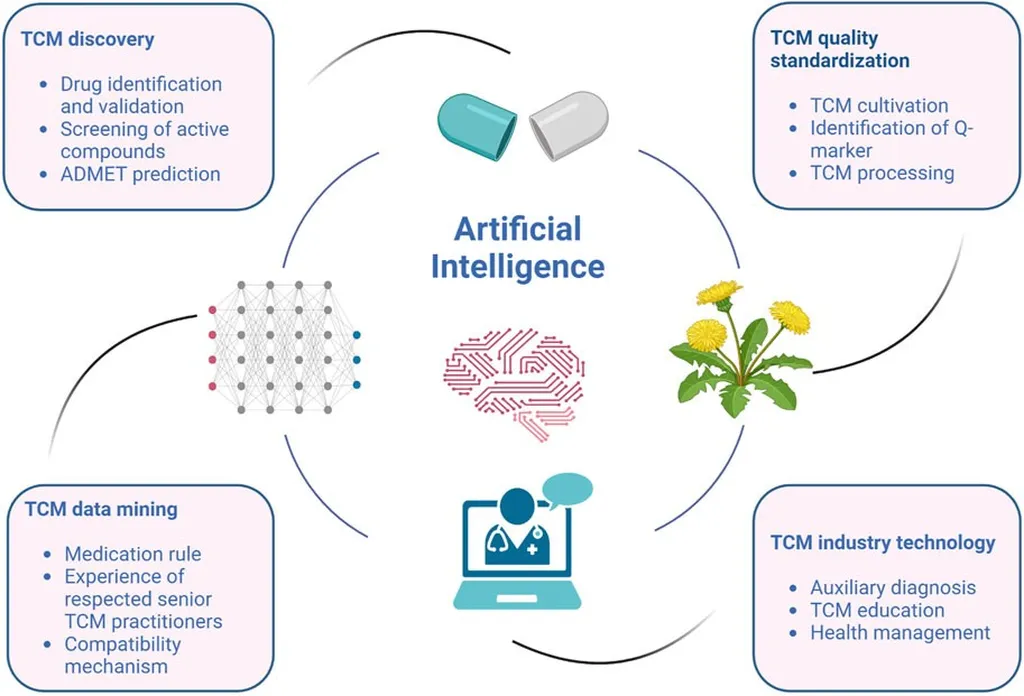In the realm of traditional Chinese medicine (TCM), a groundbreaking development has emerged from the College of Computer Science at Taiyuan University of Technology in China. Researchers, led by HOU Xiao, have introduced a novel model for recommending Chinese herbal medicine that promises to revolutionize the field by addressing long-standing challenges in recommendation accuracy and relevance.
The team’s innovative approach, detailed in a recent article published in *Taiyuan Ligong Daxue xuebao* (translated as *Journal of Taiyuan University of Technology*), leverages an improved Transformer architecture to enhance the quality of herbal recommendations. This model stands out by incorporating convolutional neural networks to mine symptom sequence information more effectively, a critical factor in TCM diagnosis and treatment.
One of the key innovations is the introduction of a multi-feature fusion attention mechanism. This mechanism ensures that the model does not overly focus on certain features, thereby reducing the likelihood of recommending duplicate herbs. “By diversifying the attention mechanism, we can capture a broader range of relevant information, which significantly improves the recommendation quality,” explains HOU Xiao.
The model also employs an entropy smoothing loss to mitigate the impact of strict ordering on the recommendation results. This technique helps in generating more flexible and contextually appropriate suggestions. The researchers tested their model on both a public clinical Chinese medicine prescription dataset and a private dataset from a collaborating hospital. The results were impressive, showing improvements in precision, recall, and F1 scores by 7%-9%, 5%-6%, and 7%-8% respectively, compared to existing models like Herb Know and TCM Translator.
The commercial implications of this research are substantial. In the energy sector, where traditional medicine is increasingly being integrated into wellness programs for employees, accurate and efficient herbal recommendations can enhance overall health outcomes. This, in turn, can lead to a healthier workforce, reduced absenteeism, and increased productivity.
Moreover, the model’s ability to reduce redundancy in recommendations can streamline the supply chain for herbal medicines, ensuring that only the most relevant and effective herbs are recommended. This can lead to cost savings and a more sustainable use of resources.
The research also highlights the importance of integrating traditional knowledge with modern technology. “Our model not only improves the technical aspects of recommendation systems but also ensures that the recommendations align with the principles of traditional Chinese medicine,” notes HOU Xiao.
As the field of TCM continues to evolve, this research paves the way for more sophisticated and effective recommendation systems. The integration of advanced technologies like Transformers and attention mechanisms into TCM practices could set a new standard for personalized medicine, benefiting both patients and healthcare providers.
In conclusion, the work of HOU Xiao and their team represents a significant step forward in the field of Chinese herbal medicine recommendation. Their model not only addresses critical challenges but also opens up new possibilities for the future of TCM. As the energy sector continues to explore the benefits of traditional medicine, this research could play a pivotal role in shaping the future of workplace wellness programs.

